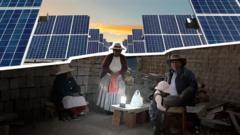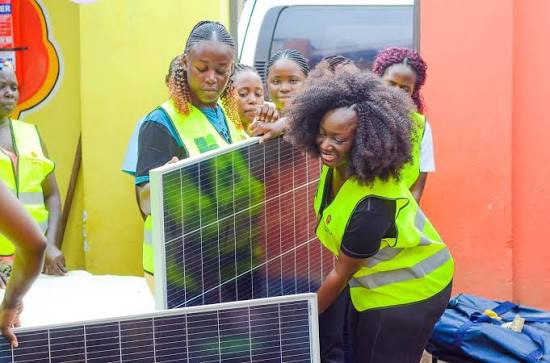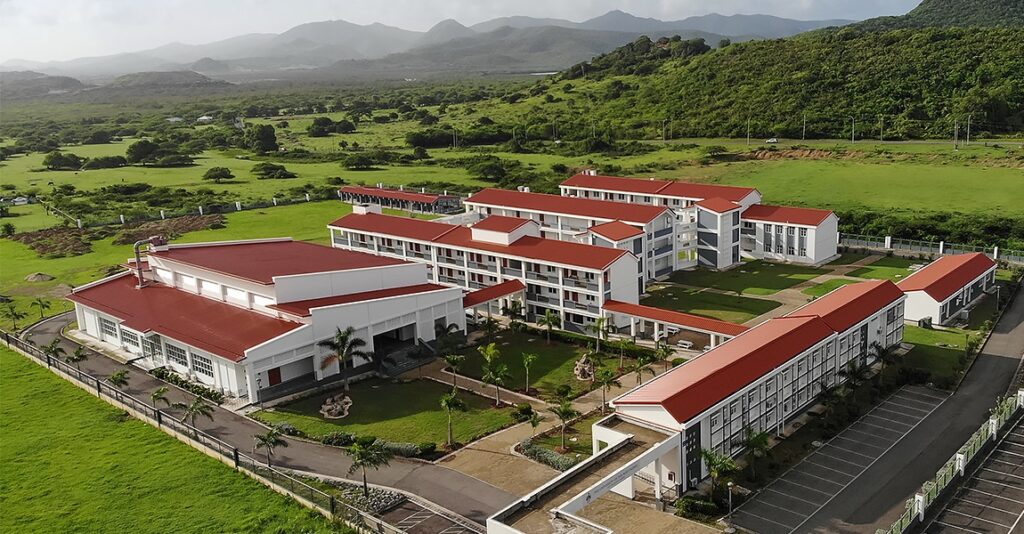In the shadows of Peru's largest solar complex, the residents of Pampa Clemesí face a stark contrast between renewable energy production and their daily struggle for basic electricity access. Rosa Chamami begins her day tending to a makeshift stove, the flames flickering from boxes that once contained high-tech solar panels now serving as fuel. The Rubí and Clemesí solar plants, installed between 2018 and 2024 in the Moquegua region, produce enough energy annually to supply hundreds of thousands of homes, yet the village remains unconnected to the power grid.
With no access to national electricity, the 150 residents of Pampa Clemesí rely on solar panels donated by Orygen, the operator of the Rubí plant; however, the high cost of batteries and converters leaves most in darkness after sunset. Carlos Gordillo, an energy expert, criticizes the current energy system's profitability-focused model that neglects remote populations.
Orygen claims to have initiated an electrification project, completing the first phase by erecting power towers and laying underground cable. Despite an $800,000 investment, the village awaits a connection from the government’s Ministry of Mines and Energy, which has postponed planned wiring. Residents, some of whom walk to charge devices, highlight the inefficiencies that exacerbate their situation.
The community's daily existence is fraught with challenge. Many lack basic provisions, relying on wood or gas for cooking, with fresh food often a luxury far beyond their reach. Pedro Chará, a villager, recalls the village's decline amid infrastructural neglect, especially following the COVID-19 pandemic.
As night descends, homes glow dimly with solar-powered torches, the brightness barely enough to illuminate simple meals shared in quiet company. A profound hope underscores their survival amidst uncertainty: the belief that access to electricity could transform their lives. Rosa reflects, "If we had electricity, people would come back," highlighting their resilience amid the stark realities they face.
In Pampa Clemesí, where abundant sunlight persists, the irony remains; the bright solar fields nearby do not light the homes of those who dwell in their shadow. The ongoing struggle for a basic resource like electricity paints a vivid picture of the disparities that exist in energy access and rural support in Peru.
With no access to national electricity, the 150 residents of Pampa Clemesí rely on solar panels donated by Orygen, the operator of the Rubí plant; however, the high cost of batteries and converters leaves most in darkness after sunset. Carlos Gordillo, an energy expert, criticizes the current energy system's profitability-focused model that neglects remote populations.
Orygen claims to have initiated an electrification project, completing the first phase by erecting power towers and laying underground cable. Despite an $800,000 investment, the village awaits a connection from the government’s Ministry of Mines and Energy, which has postponed planned wiring. Residents, some of whom walk to charge devices, highlight the inefficiencies that exacerbate their situation.
The community's daily existence is fraught with challenge. Many lack basic provisions, relying on wood or gas for cooking, with fresh food often a luxury far beyond their reach. Pedro Chará, a villager, recalls the village's decline amid infrastructural neglect, especially following the COVID-19 pandemic.
As night descends, homes glow dimly with solar-powered torches, the brightness barely enough to illuminate simple meals shared in quiet company. A profound hope underscores their survival amidst uncertainty: the belief that access to electricity could transform their lives. Rosa reflects, "If we had electricity, people would come back," highlighting their resilience amid the stark realities they face.
In Pampa Clemesí, where abundant sunlight persists, the irony remains; the bright solar fields nearby do not light the homes of those who dwell in their shadow. The ongoing struggle for a basic resource like electricity paints a vivid picture of the disparities that exist in energy access and rural support in Peru.



















